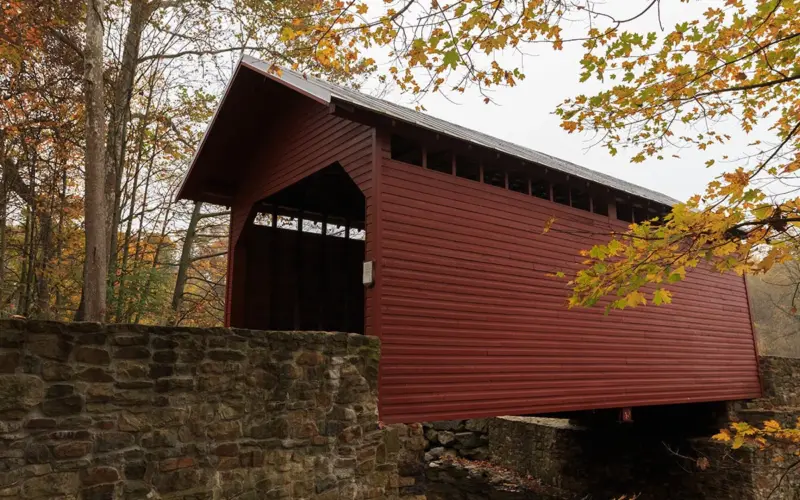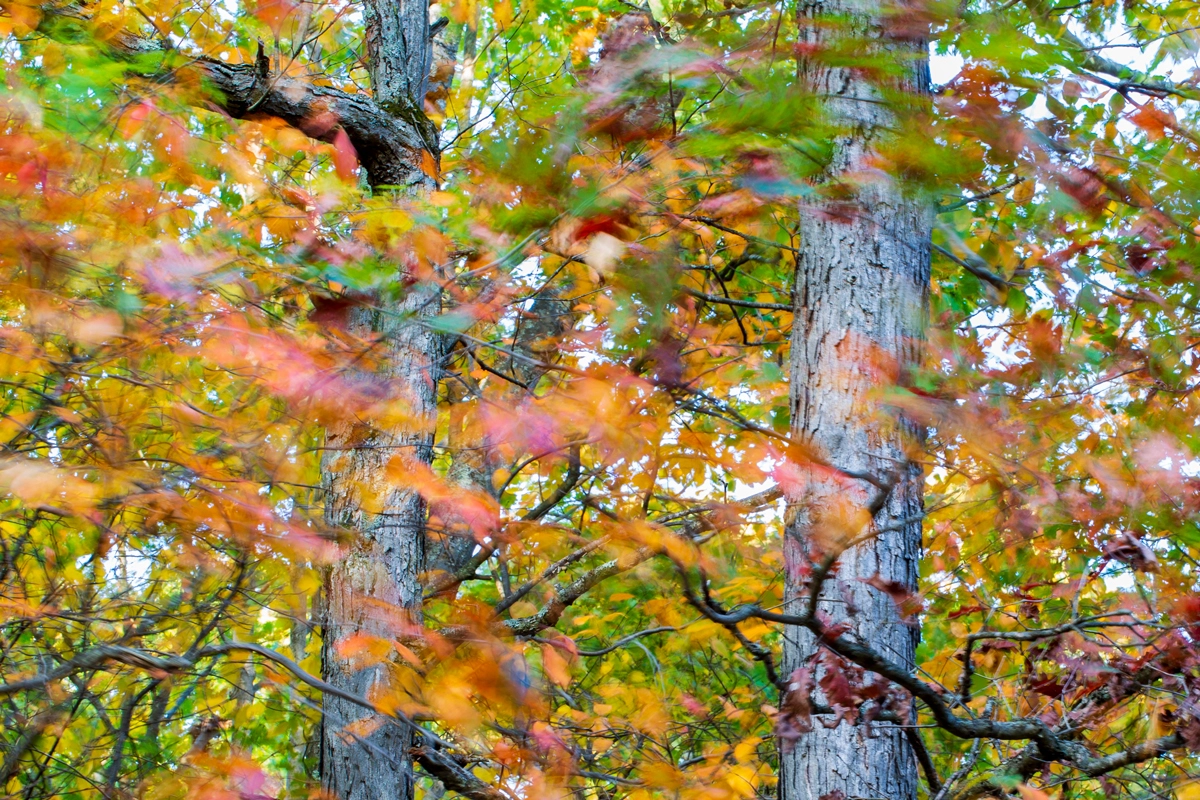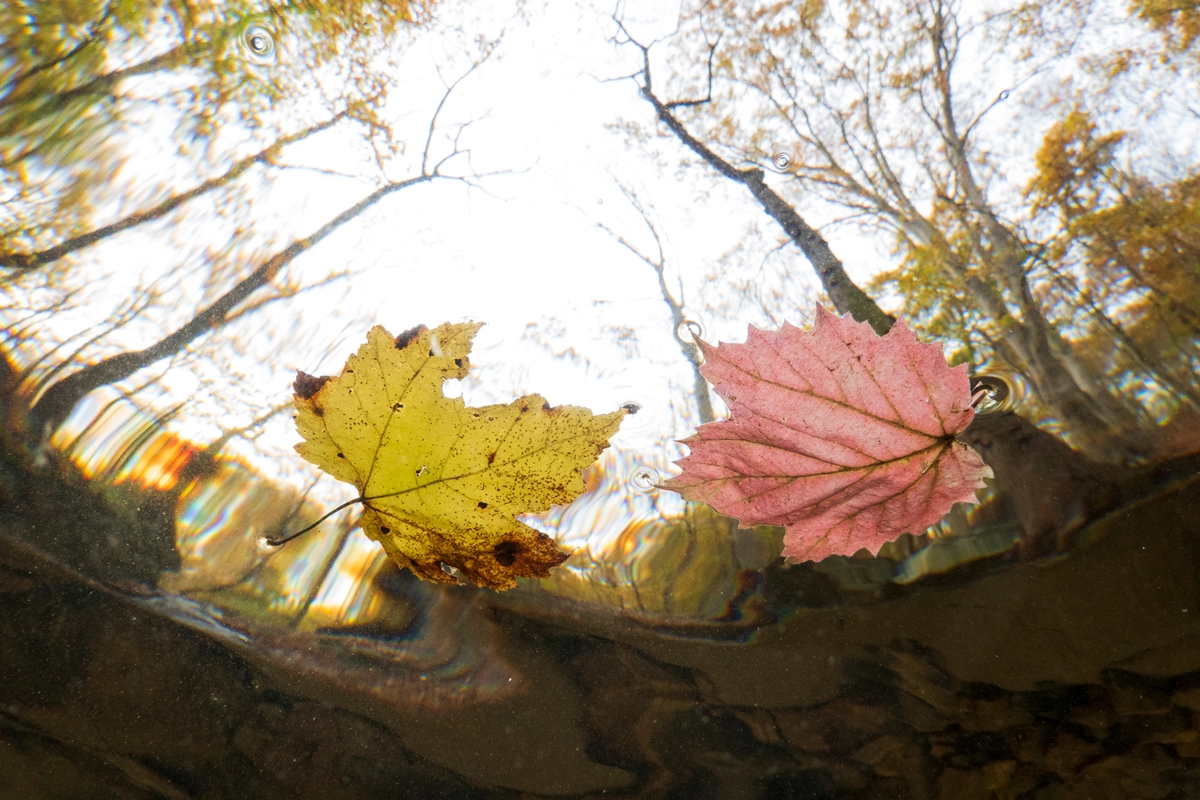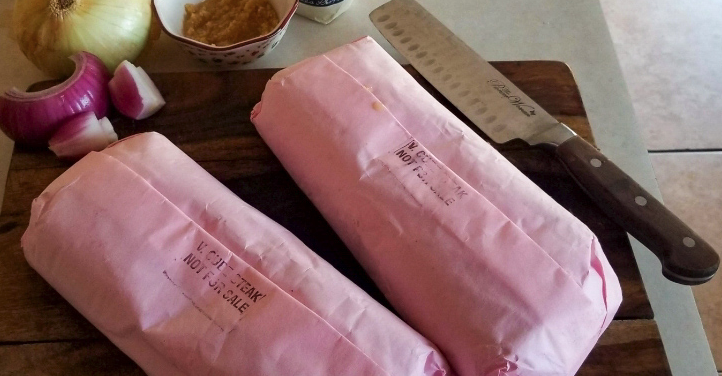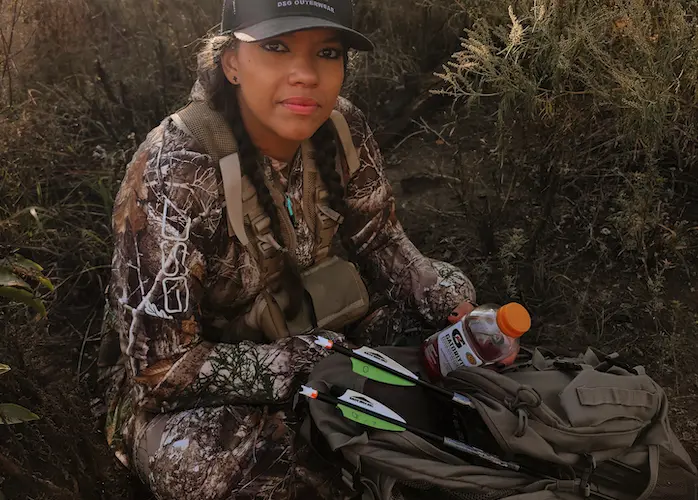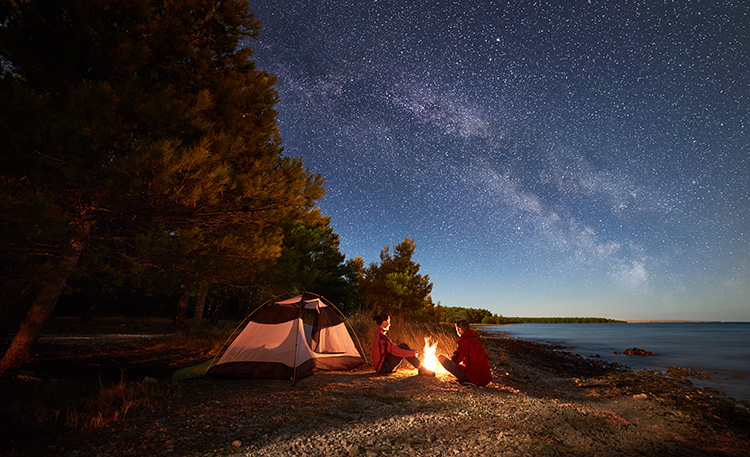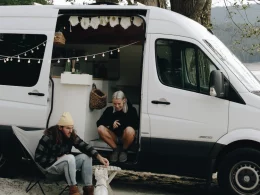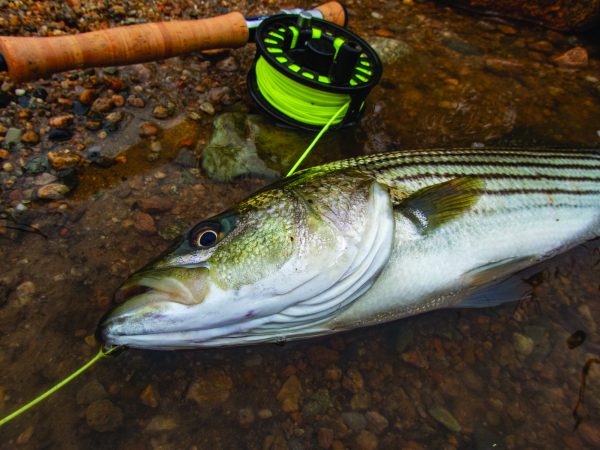Table of Contents
Planning An Autumn Photo Trip
There is nothing quite like an autumn morning. When the crisp, cool air wafts against your face as you step outside your tent. The crunch of the leaves against the weight of your boots; the sweet aroma of hay-scented fern. And then your eyes are gifted with the most beautiful display of color. A kaleidoscope of reds and oranges, yellows even purple, covers the hillsides and adorns the valleys. Yes, autumn has finally returned.
It is the season that is equal parts celebration and benediction. No other season conjures up so many memories and nostalgia as autumn. It’s a feast for your eyes, your tastebuds (ah, pumpkin), and your creativity. Colors and textures abound at this time of year, from the bumpy orange skin of gourds to macabre decorations of Halloween. And let’s not forget all the plaid shirts that will soon be worn. But nothing is more synonymous with color and texture than autumn leaves, the season’s ultimate showcase. When the trees are aflame, and the water is still; there is nothing like it. All of this means excellent opportunities for outdoor photography.
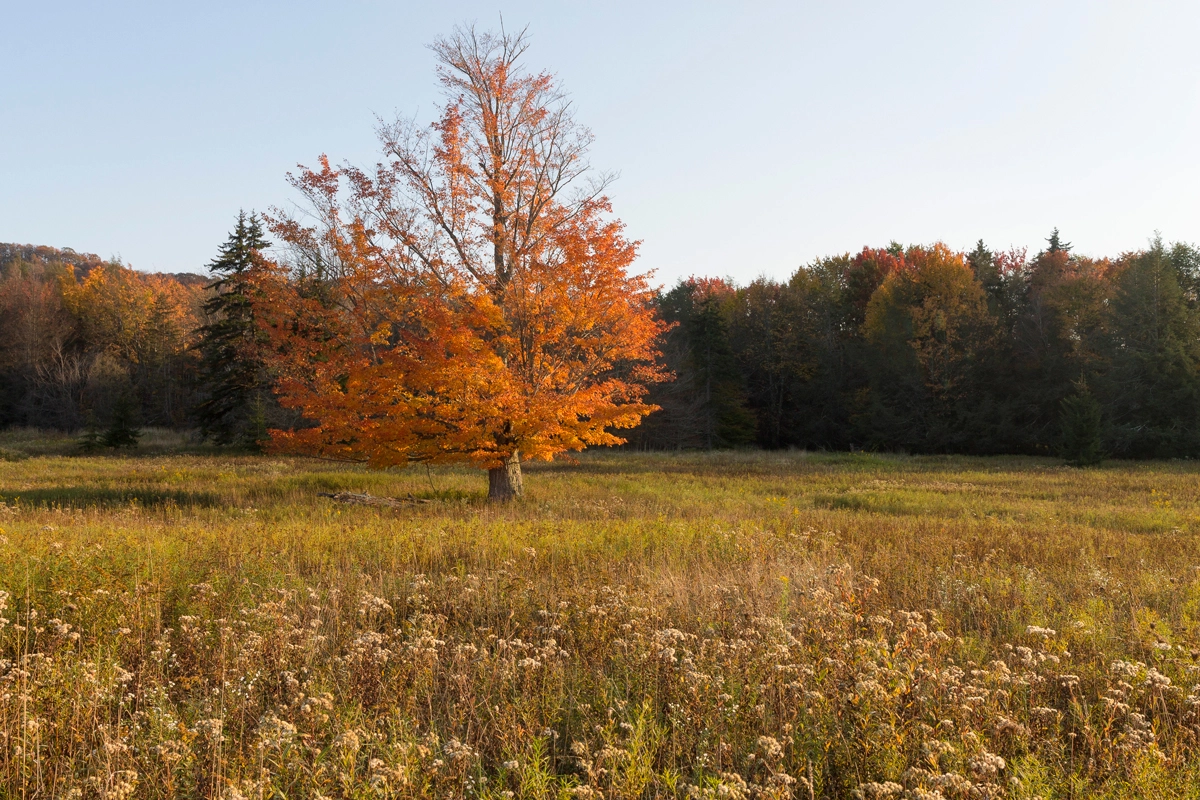
And North America has one of the best locations to observe this seasonal ritual because of the hardwood dominant forests found in the eastern part of the continent. From the southern Appalachian Mountains to the northern reaches of New England a stunning array of maples, oaks, birches, and other trees create the ultimate mosaic of autumnal color. But throughout the United States and Canada there are many incredible autumn displays such as the vast groves of aspen trees in the Rocky Mountains as well as the farms of the Midwest and even the canyons of the desert southeast. Autumn is as much a feeling as it is color, and all it takes is one tree! Though if you are the least bit obsessive as I am, you will soon be planning your fall foliage itineraries before summer has taken hold!
I have no shame in sharing my deep-rooted obsession of combining leaf-peeping and photography. Autumn foliage is so beautiful and the perfect subject for any photographer, from the novice to professional. And it does not matter what camera you use. Compelling photographs of autumn leaves can be captured by any phone, compact camera, or DSLR. Like those memories of one’s first fall festival or Halloween that forever lingers in your subconscious, capturing the sights and scenes of the season is the perfect way to relive those moments in the months and years to come as well as to share the sights with those who are not able to experience it.
When most people search for fall color to photograph they usually hope for the grand landscape scene, with maybe a red barn or covered bridge, like in a Rockwell painting. Of course, all surrounded by the full splendor of peak foliage. Peak refers to when most the leaves in an area have transitioned to the burnish, rich colors that typify the season. Now there is no 100% accurate way to predict when the almost mythical ‘peak’ foliage will occur. There are just too many variables. How warm was it in September? How cool were the evenings? Too much rain? Not enough rain? How dry were the summer months? You get the idea. However, there is usually a general timeframe when the best color will occur by latitude and elevation based on decades of data. To get an idea of when this happens in the lower 48 of the United States you may wish to consult this fall foliage prediction map from smokymountains.com.
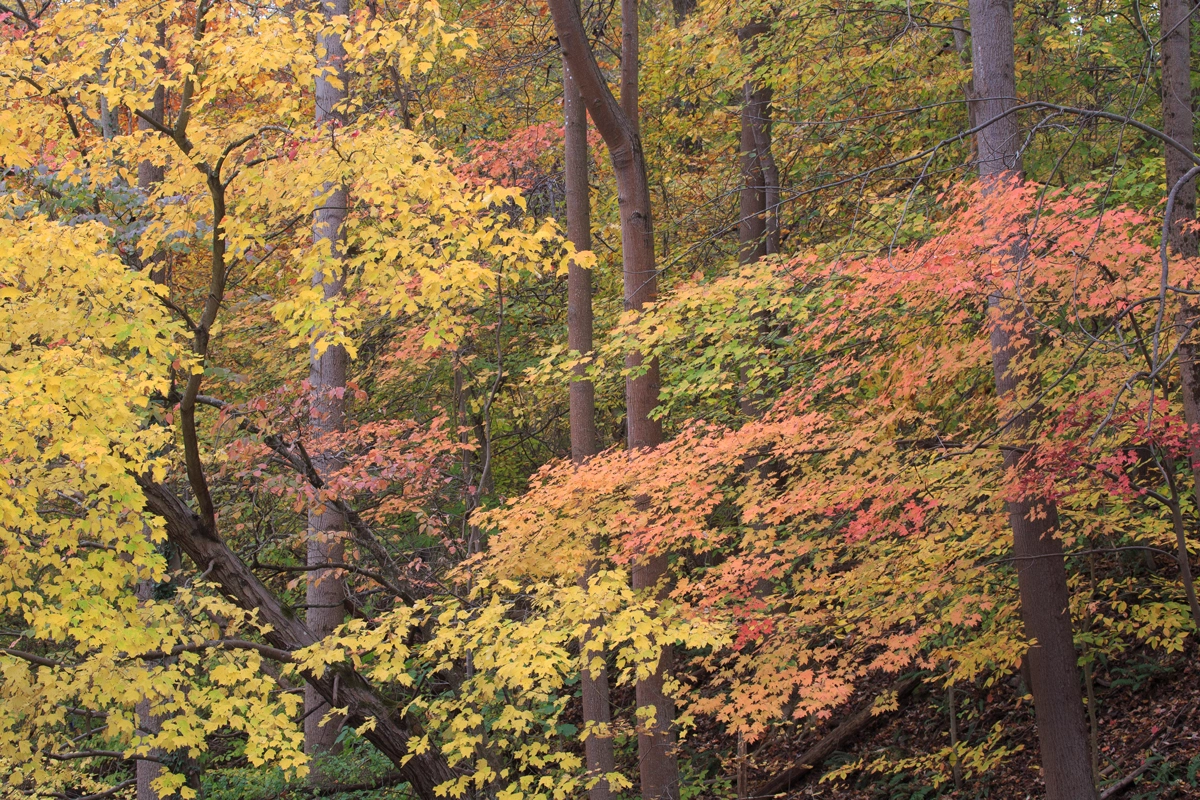
The variation to when the best color arrives can even go by county to county. In my home state of Maryland, which is a relatively small state when compared to most but contains a diverse enough topography that peak color comes in phases. For Garrett County, the most western part of the state that sits on the high elevation Appalachian plateau, it is in early to mid-October when the trees reach peak color. Northern hardwoods, and the cooler climate, make this perhaps the most New England like in the state. This contrasts with the central part of the state, home to the Blue Ridge Mountains and the Piedmont province, where oaks are the dominant tree and peak color comes usually in mid to late October. In the eastern part of the state, from the swamps of the Delmarva Peninsula to the Atlantic Coast, peak color may not come until early November. Doing research on the areas you wish to visit is necessary. If you wanted to see peak color in Garrett County but showed up when the central part was peaking, you would be disappointed. Many states offer foliage reports during autumn, like this excellent resource from Maine that gives weekly updates on the color change. Sometimes it may help to review reports from previous years to help plan your trip.
In the post-Covid era, more people are frolicking to outdoor locations than in the time prior. Count popular leaf-peeping locations among those. In some areas of the Northeast this is when they already experienced their highest visitation and it is more so today. If you plan a fall foliage excursion to these areas, it is best to do it with as early as possible. Lodging options, whether Airbnb, a picturesque cabin, or a hotel will surely book fast. If you are day tripping, camping, or back-packing you will have much more flexibility in how and when you visit these areas.
Photographic Techniques
Echoing my earlier sentiment you only need one tree, or just one leaf, to make compelling photographs of autumn foliage. The best camera to use, is the one you have with you.
With any type of photography I advise you to try for the conventional shot first; make that postcardesque image you want to share with your loved ones, and once you do, then experiment, experiment, and experiment some more. Photograph the trees from above, from below, frame the scene as unconventional as you want. Breaking normalcy is when I have my most creative moments with the camera.
Many prefer to photograph the foliage during the ‘magic hour’ when golden light interplays with shadow and color making a most dramatic scene. The light is most spectacular after sunrise and before sunset where the angle of the sun casts a warm glow onto the landscape and the leaves. If it is the entirety of the landscape you wish to photograph you will most likely be using a lens of wide angle to short telephoto focal length. To maintain sharp focus, from the closest foreground to the very furthest elements, you will want to use an aperture such as f/11 or f/16. These are the apertures that will give you a deep depth of field but consequently let in less light through the lens opening. A steady tripod will be of great use because you will normally want to use a low ISO and slower shutter speed to have a proper exposure. For these types of wide landscape scenes I prefer the of use a tripod because it makes focus deep on the scene and approach it with care. I like to pretend that I am Ansel Adams carrying a very heavy view camera. This forces me to slow down and craft a photograph, unlike the more ‘run-and-gun, style of photography I am more prone to. Another approach to these landscapes is placing rustic human-built structures, such as a covered bridge or red barn, into the composition. This could transform the photograph into something more personal to a viewer. Have fun and explore rural roads and see what you find. Once you find a location it might take a few attempts to get it just right but you will get that photograph.
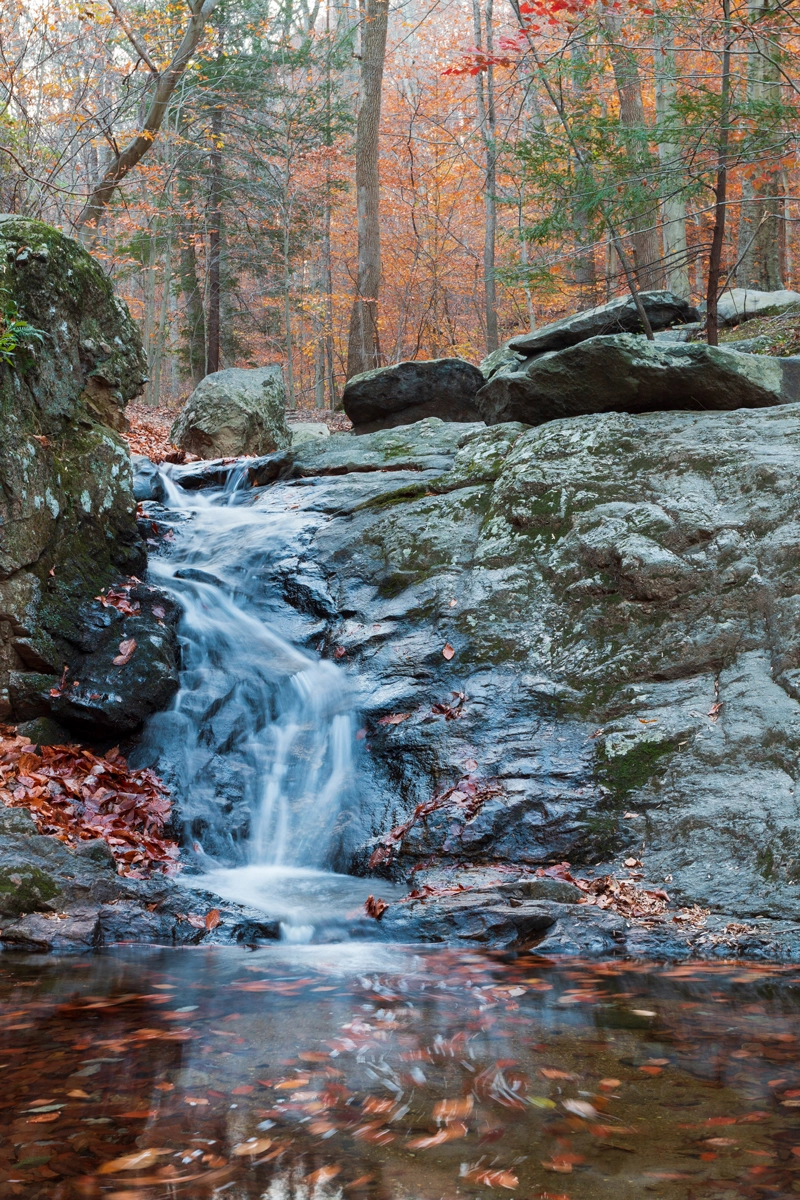
Now while I do love golden light on an entire landscape I prefer, for autumn color, more intimate photographs of the leaves and the weather to look rather dismal. A little gray can go a long way with fall foliage. When the sky is overcast the clouds act as a great diffuser and the light will be gentle and even on the trees. Any lens can work in these situations but I like to use telephoto perspectives to crop in and erase any sign of horizon line. I prefer the focus to be on the color and the individual leaves. The overcast light makes the colors pop and appear more saturated.
I will also take advantage of overcast and gloomy weather to photograph moving water within an autumn forest. You will want to use a slow shutter speed, 1/20th of a second to a full second or more, to slow the water to get that silky smooth effect making a tripod necessary. I use the same approach for leaves in the wind. These photographs convey movement in the leaves evoking the transient feeling of the season. The resulting picture will show a motion blur effect giving the moving leaves an impressionist like quality of color in contrast to the sharp detail of the standing tree trunks. I like to use a cable release cord that is connected to the camera to minimize any movement to the camera that could come from my hand touching it. If I do not have a release cable with me I will set the camera’s delay timer to 10 seconds before the shutter is released. Both approaches work well but a cable release will allow you to take more photographs.
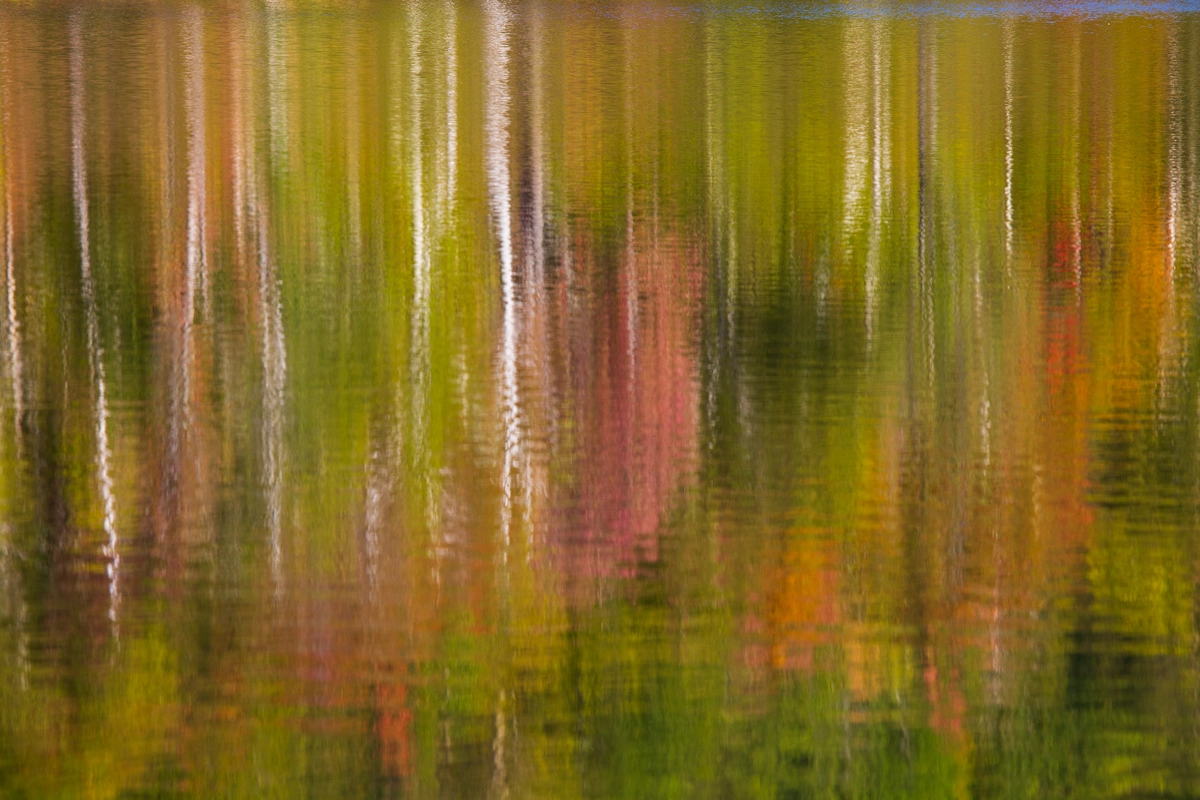
The next time you are close to a tree, look closely at the surface of a leaf. When you do you will see a world of lines and pathways. You will see shapes, triangles and polygons, that flow along the surface in perfect harmony. A macro lens will let you get close and photograph a merging of patterns and autumn color.
If not using a macro lens, get as close to the minimum focusing distance your lens or camera allows, which for many models is still sufficient. You can create very nice intimate scenes by focusing on simply one leaf at a time. I really like to take advantage of a leaf that is backlit, when the sun is in front of you but behind the subject, during the magic hour. The light will illuminate those patterns in the leaf you would not notice in normal scenarios. These intimate images are usually more contemplative for the viewer.
The past few autumns I have attempted to photograph the leaves using as many nontraditional methods as I can. Sometimes that could mean using one lens, or one focal length, to photograph the foliage in a given time period. This could be with a fisheye or super telephoto lens that I normally would not use with foliage. Or maybe it means I only use a 35mm lens for ten days to take a more stylized approach. This forces me to think outside the box with my compositions. More so than not, it also means using different photographic methods such as the use drones and underwater photography.
I love flying my drone directly overhead and looking down at the forest canopy. At that angle the texture of the trees reminds me of paint being spread out by a flattened brush on top a canvas. The diversity in colors and shade make remarkable, yet simple, scenes. When using a drone be respectful if anyone else who in the area and doublecheck if it is legal to fly a drone in that area.
Photographing foliage underwater is a challenge but when it works it is perhaps the most unique images of autumn I have ever made. The biggest issue is the temperature of the water. Sometimes I do brave it and wear shorts if the surface temperature is still warm but other times I will don a wetsuit or neoprene gloves if I am only sticking my hands in the water. My favorite photograph to make is looking above as a fish would at the leaves floating on a calm surface. I also like to do split shots, half under half above, of leaves near the surface. I mostly do this with my camera in its underwater housing but you can easily do this with a GoPro or other action camera as well. What’s better with the action camera is you can attach it to a pole so you can keep your hands and body warm.
Conclusion
The biggest issue with photographing the changing color of the leaves is that there is never enough time. But please enjoy the process. Autumn always leaves us wanting more, kind of the like the memories it conjures. But with your photographs you can relive them, and plan for the next time the crisp air returns. But when that last leaf falls, the sweetest of all melancholy, I hopefully will be there to capture it. Happy Autumn.

